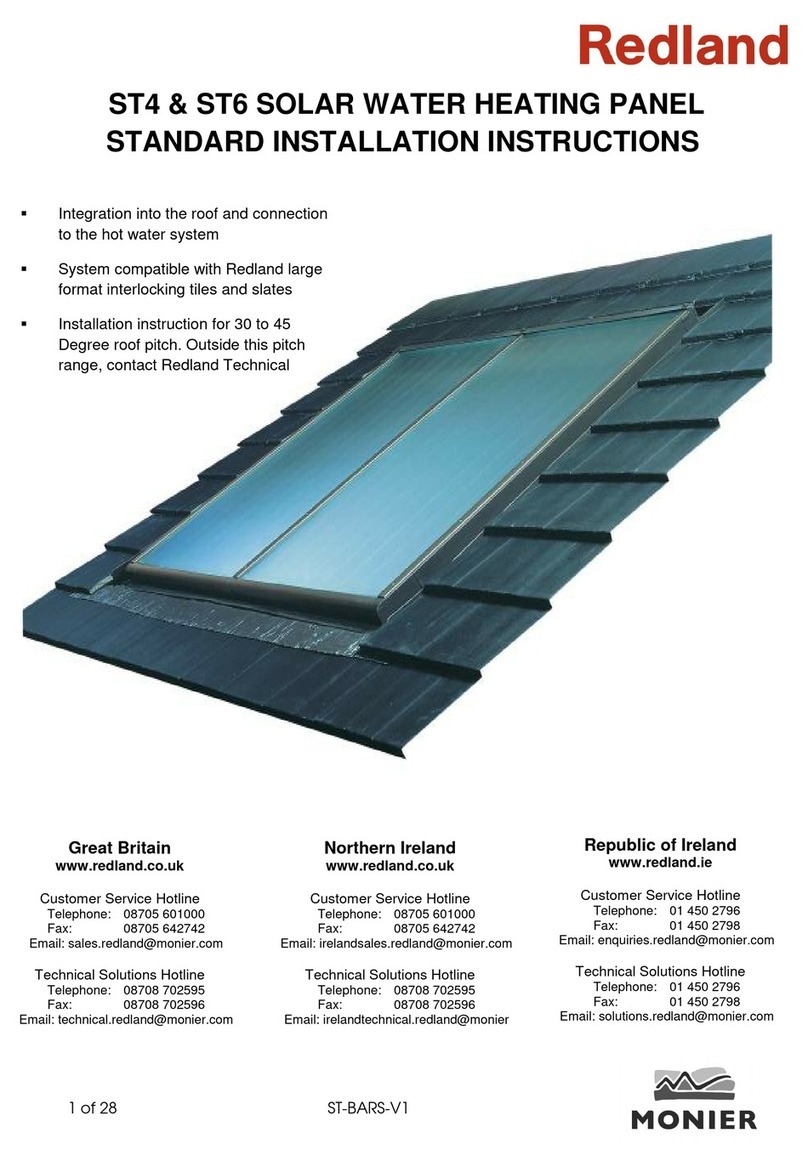Solar PV Tiles – Installation Instructions 18 July 2012
Page 2 of 13
1 INTRODUCTION
It is highly recommended that you read all the guidance and
installation notes before starting the installation to ensure that the
Redland Solar PV tiles and system are installed safely.
1.1 HEALTH & SAFETY
1.1.1 GENERAL GUIDANCE
•Ensure most up to date Construction (Design and Management) Regulations (CDM) and
general construction site training are followed.
•Any person handling PV tiles should be trained in correct manual handling practice. Please
note also that PV tiles can have sharp edges and so appropriate safety gloves should be
worn when handling panels.
•All appropriate Health and Safety regulations should be followed correctly.
•Avoid installing the system in poor weather conditions, including strong wind, rain, ice or
snow.
•Do NOT walk on the PV tiles at any time.
•The slating and tiling should be carried out in accordance with the current version of British
Standard BS 5534, Code of practice for slating and tiling (including shingles) and current
Redland Solar PV tile fixing instructions.
•Install all components as specified within this guide to ensure weather-tightness and wind
uplift security.
1.1.2 ELECTRICAL HAZARDS
Photovoltaic (PV) tiles do not present a risk as long as appropriate safety practices are
followed at all times during installation. In particular, you must be aware of the following:
•PV tiles produce a DC voltage whenever exposed to light. This voltage cannot be switched
off.
•All work must be carried out with the system disconnected from the main electrical supply.
•PV tiles are pre-wired with insulated connectors to prevent an electrical shock during
general handling. However, care must be taken not to cut or damage PV tile cable
insulation or expose bare wire.
•Ensure all PV tile cable connectors are dry and free of dirt before making connections.
•Ensure no PV tile cable ends are left exposed to the weather during pauses in the work
schedule or after completion of the works.
1.1.3 INSTALLATION PREPARATION
Follow the guidance below to ensure the Redland PV tiles are installed and handled
correctly:
•Use this installation guide alongside your PV tile layout and circuit diagram to determine
the location and layout of the Redland Solar PV tiles and associated PV tile cables on the
roof.




























